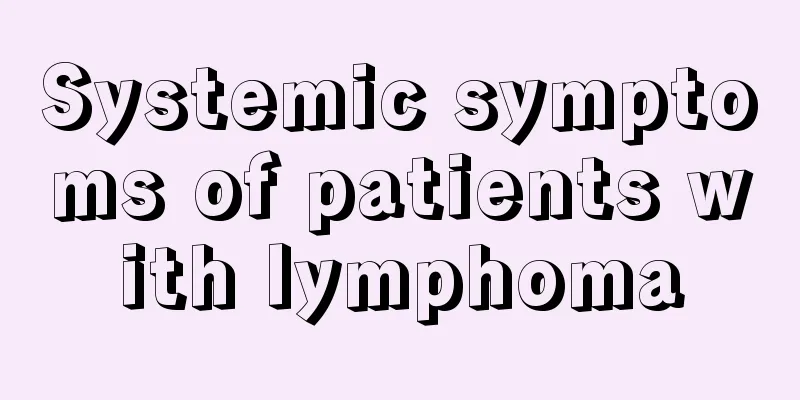Cerebrospinal fluid mononuclear cell increase

|
Cerebrospinal fluid mononuclear cell increase is a common symptom in clinical medicine, which is generally a manifestation of tuberculous meningitis. Tuberculous meningitis is a relatively serious brain disease and needs to be treated properly during the onset period, otherwise it will affect the patient's brain health and overall health. Next, I will introduce to you the treatment methods of tuberculous meningitis. 1. General treatment (1) Nursing: Depending on the condition, the patient should stay in bed for about 6 months. If the patient is conscious, he or she can move the lower limbs appropriately while lying flat on the bed to prevent thrombosis. Patients who are in coma or have incontinence can be catheterized, fed through the nose, and turned over regularly to prevent pressure sores. (2) Supportive therapy: Provide high-nutrition, easily digestible diet to correct water and battery imbalance, metabolic disorders, etc. The daily infusion volume should not be too much, and the intake and output should be kept basically balanced. (3) Symptomatic treatment: Patients with high intracranial pressure (intracranial pressure greater than 200 mmH2O) can be given 20% mannitol by rapid intravenous injection every 6 or 8 hours. If necessary, glycerol fructose can be used in combination to reduce intracranial pressure. Acetazolamide can be given at the same time, 3 times a day, to reduce the production of cerebrospinal fluid. For patients with persistent high intracranial pressure that cannot be relieved, in addition to oral prednisone, dexamethasone can be injected intravenously once a day (for 5 to 7 days) and/or spinal injection therapy can be given 2 to 3 times a week (slowly drain cerebrospinal fluid and slowly inject isoniazid and dexamethasone into the spinal canal). 2. Systemic treatment (1) For patients who have just received treatment, HREZS is given for an intensive phase of 3 months and HREZ chemotherapy is continued for more than 9 months. The dose of isoniazid can be increased to once a day, and prednisone is given once a day (the dose can be reduced after the condition stabilizes. The total course of treatment is preferably 3 months). The total course of anti-tuberculosis treatment is 12 to 18 months. (2) For retreatment or relapse patients, sensitive drugs should be selected based on previous medication history and drug sensitivity tests. For patients who are estimated to be resistant to first-line drugs, a regimen of isoniazid, prothionamide, levofloxacin, sodium para-aminosalicylate or pyrazinamide, and amikacin (intravenous injection for 3 months) can generally be selected, with intrathecal injection added if necessary. The total course of treatment is more than 18 months. The above regimen should pay attention to monitoring liver and kidney function, blood uric acid, blood and urine routine tests, etc. 3. Intrathecal injection (1) Indications: ① Patients with refractory high intracranial pressure. ② Those with significantly increased cerebrospinal fluid protein quantity. ③ Meningitis with early spinal canal infarction. ④ More serious cases, accompanied by coma. ⑤ Abnormal liver function, resulting in discontinuation of some anti-tuberculosis drugs. ⑥ Those with chronic, recurrent or drug-resistant disease. (2) Drugs and treatment courses: Generally, a mixture of isoniazid and dexamethasone is injected slowly into the spinal canal (if the patient has adverse reactions during the injection, the injection will be stopped), 2 to 3 times a week. The total course of treatment depends on the patient's condition. After improvement, the number of doses per week is gradually reduced until it is completely reduced. 4. Treatment of hydrocephalus (1) Ventricular puncture and catheter drainage When the intracranial pressure is very high, ventricular puncture and catheter drainage can be performed in the early stage. (2) Ventricular shunt surgery: For patients with chronic hydrocephalus who have not responded to long-term treatment, ventricular shunt surgery may be considered. 5. Experimental treatment When the patient's condition is serious, accompanied by impaired consciousness, and has not been diagnosed with tuberculous encephalitis, but the possibility of tuberculous encephalitis is suspected based on clinical experience and the patient's symptoms and signs, anti-tuberculosis experimental treatment can be given as soon as possible and examinations can be carried out at the same time. |
<<: Will drinking milk cause kidney stones?
>>: The drug of choice for sinus tachycardia
Recommend
What is the cause of axillary edema after breast cancer surgery
Lymphedema refers to tissue edema caused by the a...
What are the symptoms of stomach problems?
Gastric diseases include gastric ulcer, chronic g...
What medicine should I take for alcohol allergy?
In real life, alcohol is a relatively common liqu...
Is rectal cancer hereditary?
Is rectal cancer hereditary? Many patients with r...
What are the dietary taboos for patients with cerebral thrombosis?
Cerebral thrombosis is becoming more and more com...
Are aniseed and star anise the same?
When making food with a strong fishy smell, be su...
What are the early symptoms of lymphoma
The early symptoms of lymphoma are not obvious, a...
How to deal with fainting while running
Accidents can happen at any time in people's ...
What are the oral drug treatments for osteoporosis
Osteoporosis is a common disease among middle-age...
What causes pain under the tongue? Pain under the tongue is usually caused by these 5 factors
There is a yellow-white or gray pseudomembrane at...
Status of advanced lung cancer in the last month
Under normal circumstances, the symptoms of the l...
Review of cervical cancer examination and clinical classification
Cervical cancer is the natural enemy of women and...
Biological therapy for colon cancer
Biological cell immunotherapy is the best choice ...
Can soaking in salt water reduce inflammation?
I believe that many people are familiar with the ...
How to stop breastfeeding if you don't plan to breastfeed
As children grow up, they need to face the proces...









